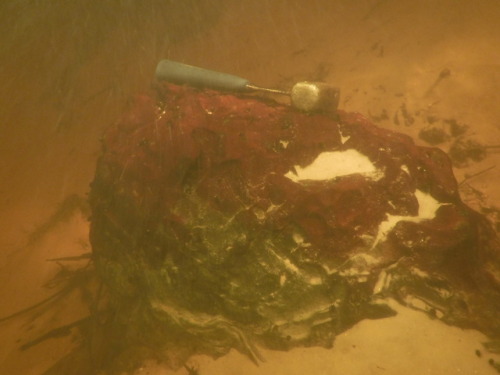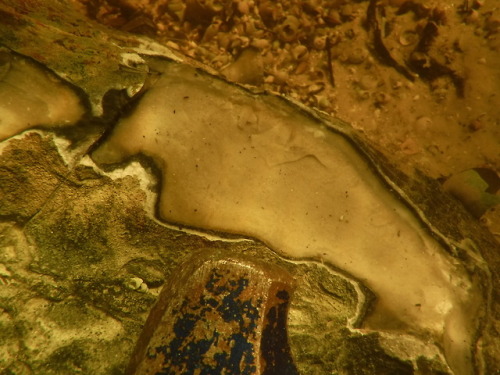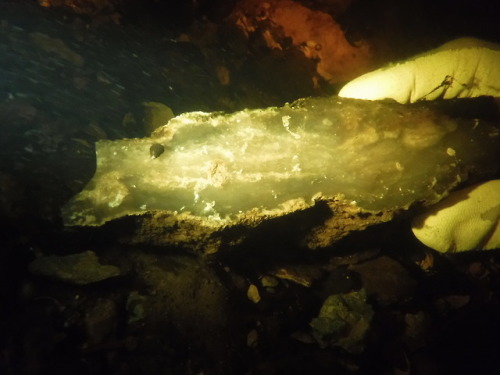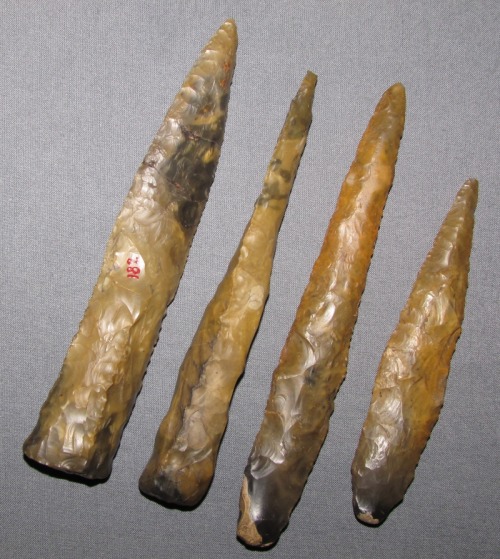#stone tools
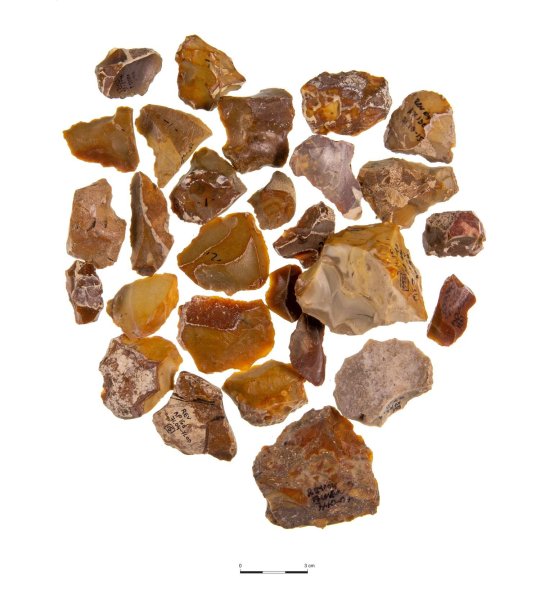
A first-of-its-kind study at Tel Aviv University asks what drove prehistoric humans to collect and recycle flint tools that had been made, used, and discarded by their predecessors. After examining flint tools from one layer at the 500,000-year-old prehistoric site of Revadim in the south of Israel’s Coastal Plain, the researchers propose a novel explanation: prehistoric humans, just like us, were collectors by nature and culture. The study suggests that they had an emotional urge to collect old human-made artifacts, mostly as a means for preserving the memory of their ancestors and maintaining their connectedness with place and time.
The paper appeared in the prestigious scientific journal Scientific Reports, published by Nature. Read more.
Drill
Flaked jasper
Age and manufacture unknown, Northern California
To help support the preservation of our collection click here.
Post link
Neanderthal Tool Study May Offer Clues to Extinction - Archaeology Magazine
“He suggests that the Châtelperronian tools may have been developed elsewhere and brought to the Iberian Peninsula by migrants—perhaps from France—who replaced an older Neanderthal population. Such local patterns of extinction and replacement could help researchers understand why all Neanderthals eventually died out, he added.”
Experiments show why early humans began adding handles to tools
“The work by the researchers entailed enlisting the assistance of 24 male and 16 female adult volunteers to conduct early human type activities using both hafted and unhafted tools—each was fitted with a suit holding sensors that measured motion, muscle contractions, oxygen consumption and the speed at which tools were moving through the air.”
Sampling underwater chert quarries in northwest Florida. A few weeks of working in the Wacissa, Aucilla, and St. Marks Rivers is paying off with some awesome new information about submerged prehistoric quarries!
Post link
My work digging up the shelters of our ancestors
“These findings suggest that H. sapiens was in Europe 10,000 years earlier than we previously thought, on the basis of evidence dating back 44,000 years from Bulgaria2. We think the H. sapiens at Mandrin stayed for only about 40 years, and, from soot-deposit analysis, they arrived just one year after the previous Neanderthals. They used the same distant flint sources, suggesting they had Neanderthal guides who passed their knowledge on to them. Others have proposed similar contacts elsewhere, but the pre-eminent view is that we, H. sapiens, taught the Neanderthals — not the other way around. There is a school of thought that sees Neanderthals as inferior apemen, and another that sees them as just like us. Both are, in my view, unhelpful. We should try to understand them on their own terms.”



